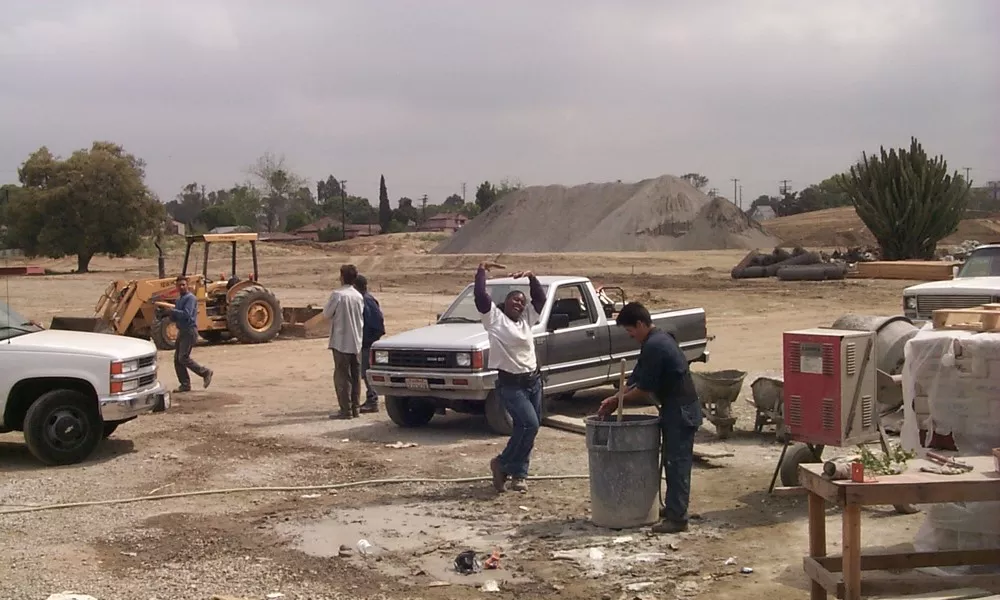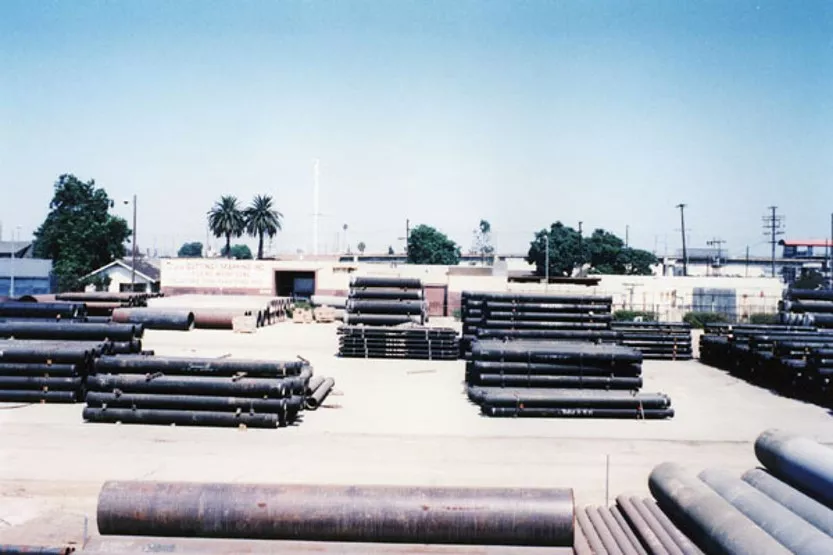
By Barbara Hensleigh
In 1930, Los Angeles lost out on the preservation of open space when the Olmstead brothers’ proposal for a chain of connected parks was rejected by business leaders; industrialization and development were more important…or so they thought. But now we know: studies have shown that open space reduces stress, contributes to our well-being, and more. Some of our city leaders understand the importance of open space, and not solely for recreation. Enter stage right, the incredible oasis in South Los Angeles, the Augustus F. Hawkins Natural Park, named after the first African-American west of the Mississippi to be elected to Congress. Although hiking paths, indigenous plants and wildlife abound, it did not happen because our early leaders preserved the native space. It happened because the community came together and transformed an old industrial pipe storage yard, owned by the DWP, into a place of contemplative tranquility. Who designed this jewel? It was Stephanie Landregan, the current Director for the Landscape Architecture Program and the Horticulture & Gardening Program at UCLA Extension. Here is our interview with her.
Q. Tell us a bit about yourself.
A. I have a degree in three-dimensional art from the University of Kentucky. I initially designed dinosaurs for museums. I was one of the first females in Texas who was licensed as a brake mechanic. I came to Los Angeles with the intention of working in Hollywood on set design but, after enrolling in Art Center, I became interested in landscape architecture. I completed the extension certificate at UCLA in landscape architecture (the course I currently direct). Ultimately, I devoted my efforts to public works projects, because of their legacy. I was only about four years out of school when I landed the work to design the Hawkins Park.
Q. How did turning an industrial site into a nature park in South L.A. happen?
A. Councilwoman Rita Waters was interested in making it a park. The Santa Monica Mountains Conservancy was buying up land in on the westside to keep it from being developed. Joe Edmiston, from the SMMC, was at a council meeting trying to get additional funds to purchase more land. Waters said, “I keep voting for money for rich people, what are you going to do for SCLA?” Joe went on a tour of the site with Rita and said, “I’ll do it.”
At the site, there was an old pipe used to vent sewer, thirty feet high, and four water wells that required mitigation. There was some toxic soil, although the site wasn’t nearly as badly contaminated as what is the Vista Hermosa Park, which I also worked on.
We worked with architects, the largest minority owned firm (Jenkins, Gales and Martinez) in L.A., to design a craftsman ranchero on the site. We saved some of the trees, including a large black walnut. Huntington Gardens donated cactus. We designed the first permeable parking lot at a park in Los Angeles. Building and Safety wanted it paved over, but we won that battle.
Q. I was told that you arranged to have dirt taken from landslides in the Malibu area along PCH to be used to create a contoured landscape in the park? Is that true? Did you have to move mountains (pun intended) to get multiple agencies on board?
A It was easy to get the Malibu dirt; they wanted to get rid of it and we knew exactly where to put it. We found the contractor who was removing the mudslide dirt and asked if we could have the 23 truckloads, or more. We made hills with the dirt and graded the flat landscape into rolling hills.
Q. The evolution of the Hawkins Park was somewhat unique in that the community was heavily involved in the development of the park. How did you involve them?
A. We knew the value of “public process.” It’s not a one-off. We knew that, after we created the park, we were going to leave it to the community as its caretaker. If you don’t engage the people who will be the caretakers, then you aren’t a good planner. So, there was a small house across the street from the site that we used for community involvement. We would have good food and conversation there. It was an open construction site that the community could drop in and see the progress, like their house. We hired 50 people from the community to help build the site. We had grandmothers with hardhats planting and putting in the irrigation systems. We held an event at Art Share LA where the community came and created decorative tiles, which are placed in and around the park, at a ceremony for the occasion.
When the governor came to the opening and christened the park, we honored the community members who participated. We also hired neighborhood kids as “junior rangers.”
Q. There is inequality in park access, especially in Los Angeles. It has been shown that park design can be made with implicit assumptions (e.g., a sports field for people of color or Europocentric leisure parks in white neighborhoods). As a landscape architect, how do you feel your work should contribute to reduce inequalities in design and access?
A. It should. For example, there was already a park three blocks away from the Hawkins site, but it was proprietary – it was a sports facility, not all could use it. The community wanted a place for respite. Unfortunately, we all too frequently heard comments from those on the outside, such as “Why are we spending money on this? They are just going to ruin it.” Joe Edmiston, who was instrumental in forming the park, said we only do one kind of park, the right kind of park. So, the same expensive features in Malibu were integrated into this Augustus Hawkins Park. There were stone pillars, wrought iron, a beautiful ranch style information center, etc. If you give someone a jewel, they will treasure it.
Q. From Olmsted to now, parks conception has changed a lot. We are not in the romantic conception of park, we are not either in the idea of park should be made only for outdoors activities and sports. From the knowledge you developed, and from your point of view, why are parks important in a more sustainable and a more equitable city?
A. The pandemic exposed the reality of open space as a destination for us to recover. The pastoral effect is so important for the human spirit. There is recreation and then there is re-creation. Our parks should be sacred spaces. Providing open space is the highest gift you can give to a community.
Q. What are you doing these days?
Our extension program is hoping to work with CalTrout on the Rindge Dam project in Malibu Creek. There is money available to remove the dam, the largest obstacle to the return of salmon there. We look for projects that take 11 weeks, because that is the length of our quarter sessions. I chose projects near and dear to my heart. I’m an educator so I can help inspire younger people to continue the work I do; that is, becoming the next stewards of the earth.





All Photos by Stephanie Landregan